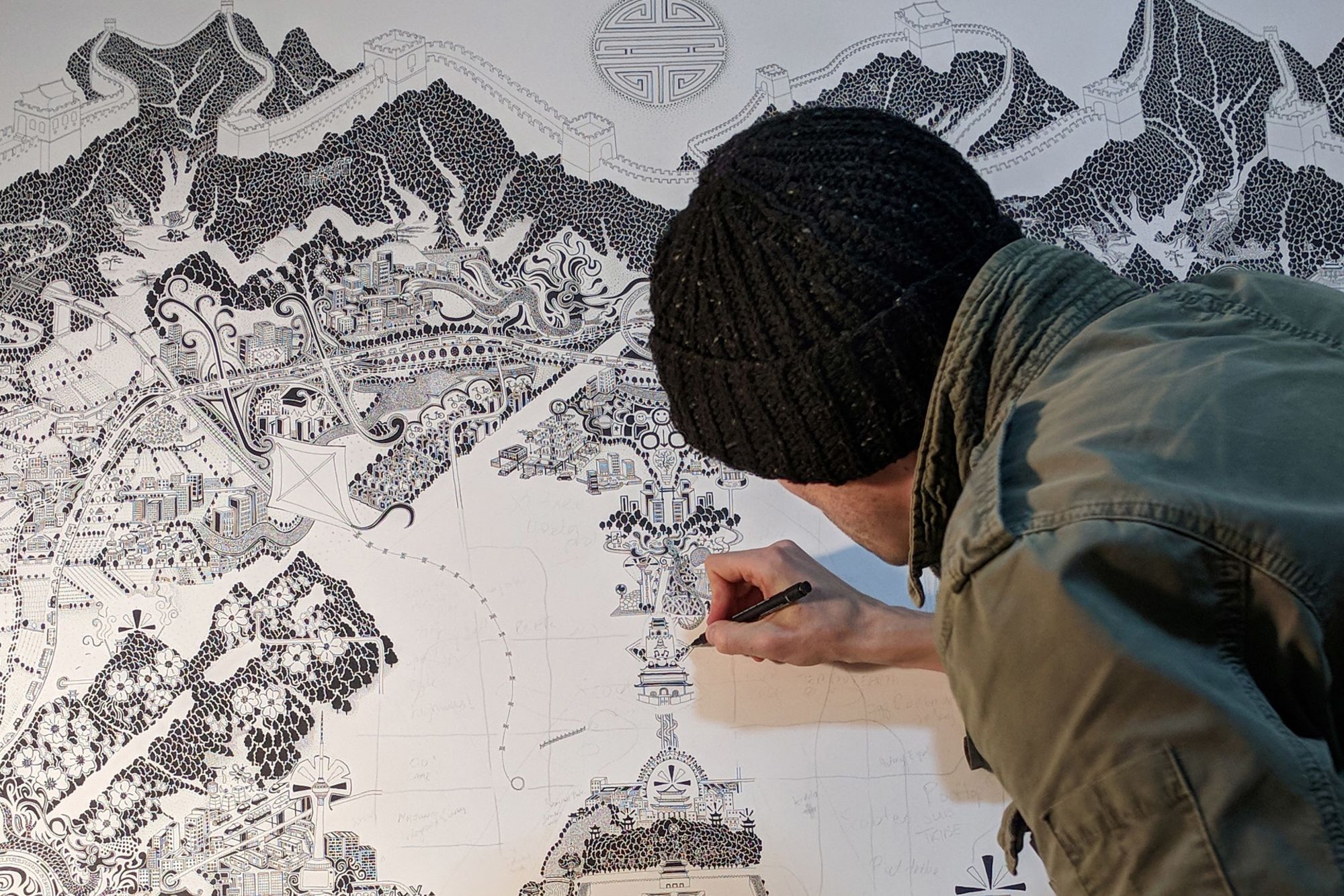British artist Gareth Fuller’s densely illustrated, topographic drawings analyze the phenomenology of a place.
His research often begins with comprehensive walks – sometimes amounting to hundreds of miles – through alleyways, along highways and via buildings and cultural landmarks.
It’s a routine the artist has grown accustomed to – until he was forced to self-quarantine for 14 days.
Based in Beijing, Fuller returned to the Chinese capital from Kuala Lumpur on the evening of March 3, only to discover that he was subject to two weeks of mandatory self-isolation under new rules imposed to slow the spread of the coronavirus.
“It was only natural for me to document my experience,” he said in a phone interview, now free from quarantine. “I decided to map the four walls I was confined in and see where that took me creatively.”
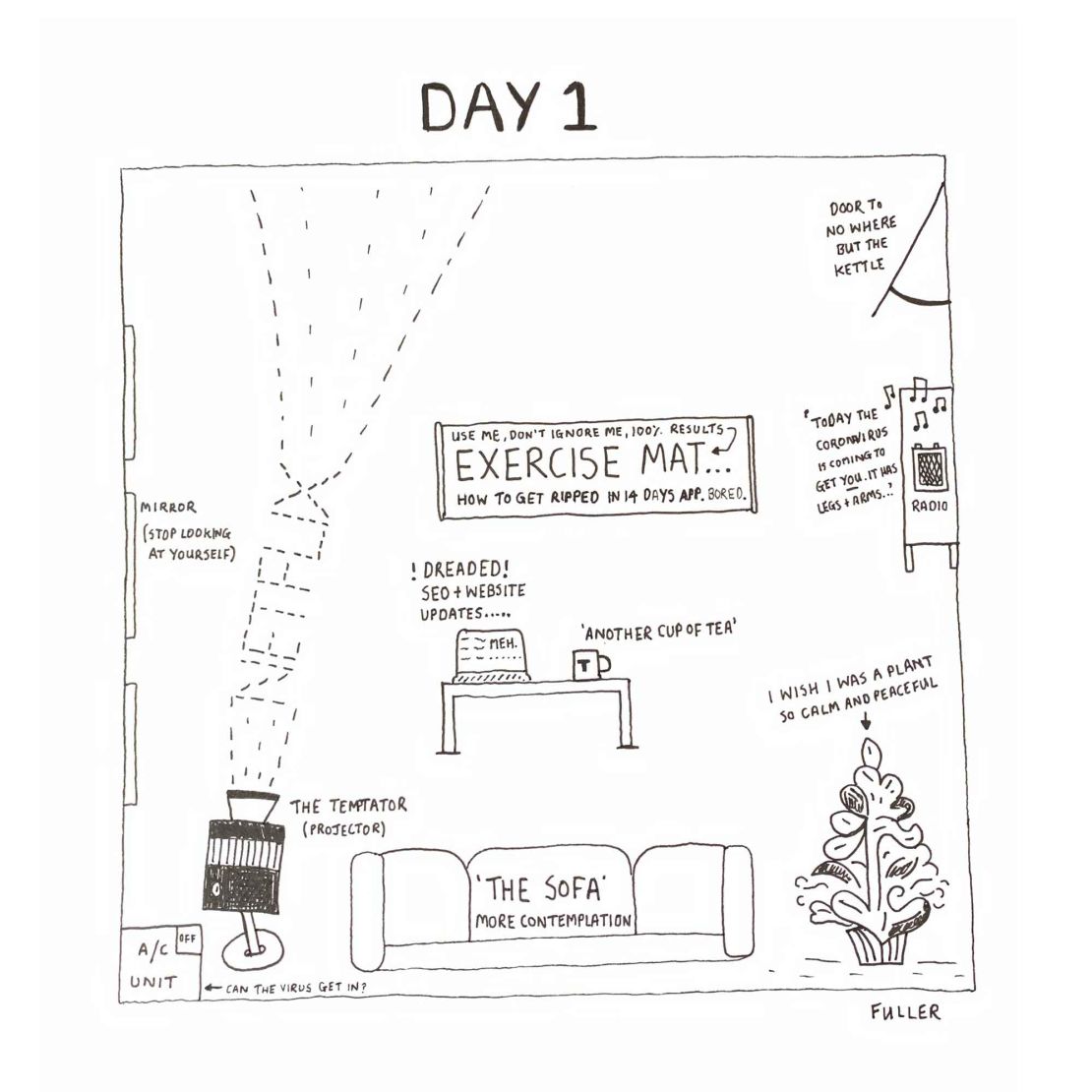
Each day for two weeks, Fuller depicted his experiences and thoughts from inside his 590 square foot apartment. The result is a series of 14 drawings titled “The Quarantine Maps.”
Fuller spent mornings observing what was around him – his furniture, news from the television and radio, movements outside his window, and takeaways from long conversations with his wife, who was also in quarantine.
Late afternoons and evenings were spent drawing in his sketch pad. “You end up spending more time looking at the details, slowing back down, getting into the meat of certain subjects you wouldn’t usually have time to do. Your day is much more planned and less reactive.”
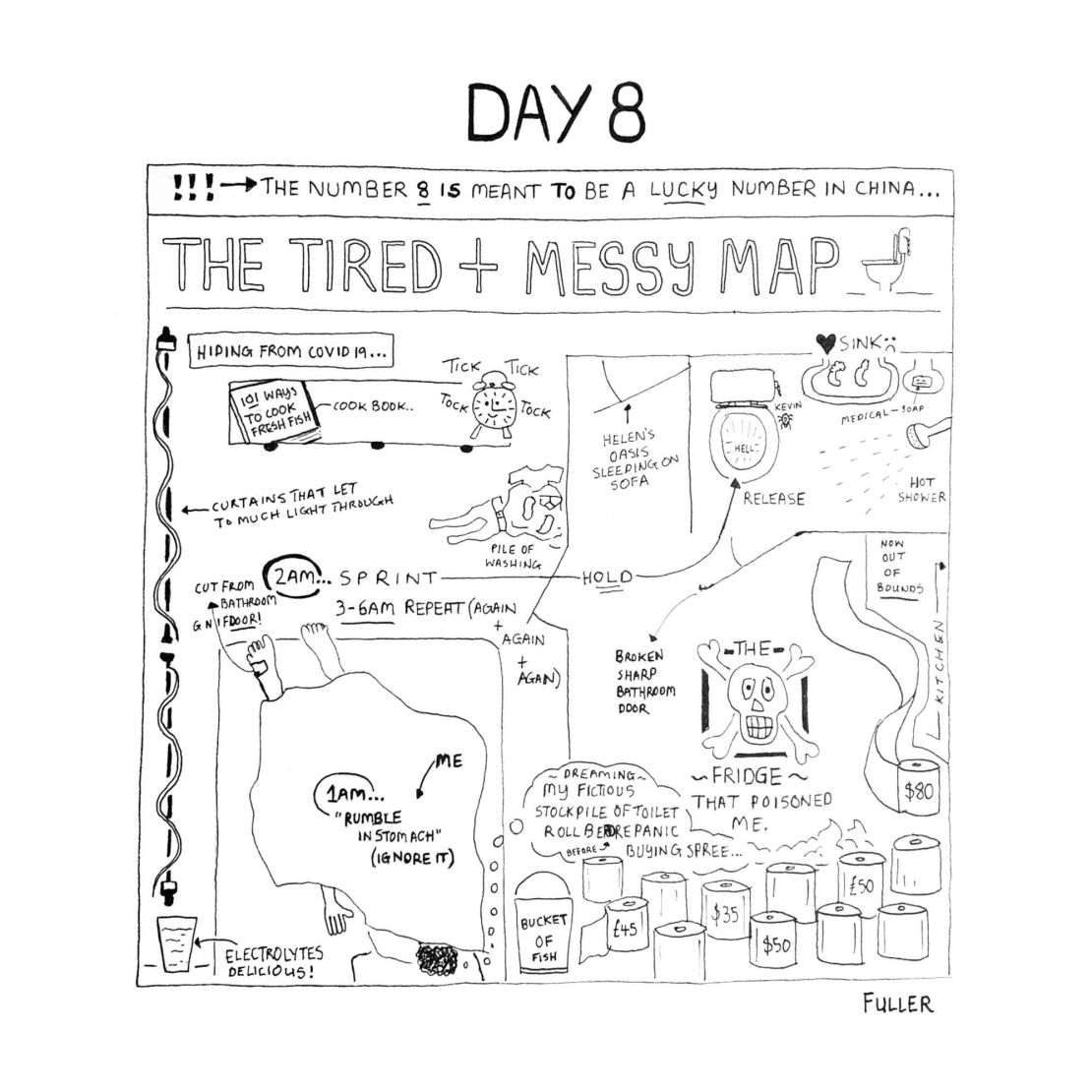
Inside four walls
The first few maps of the series focus on Fuller’s apartment. He depicts the sofa where he spends most days reading and listening to the radio, and the projector which he avoids, in case he falls into the trap of watching films for hours on end.
He draws his desk and all the preventative equipment he gathered, prior to the lockdown.
Eventually, his house feels cramped and claustrophobic and he spends several hours on his terrace each day, peering out the window onto the quiet streets of Beijing – documenting the world below.
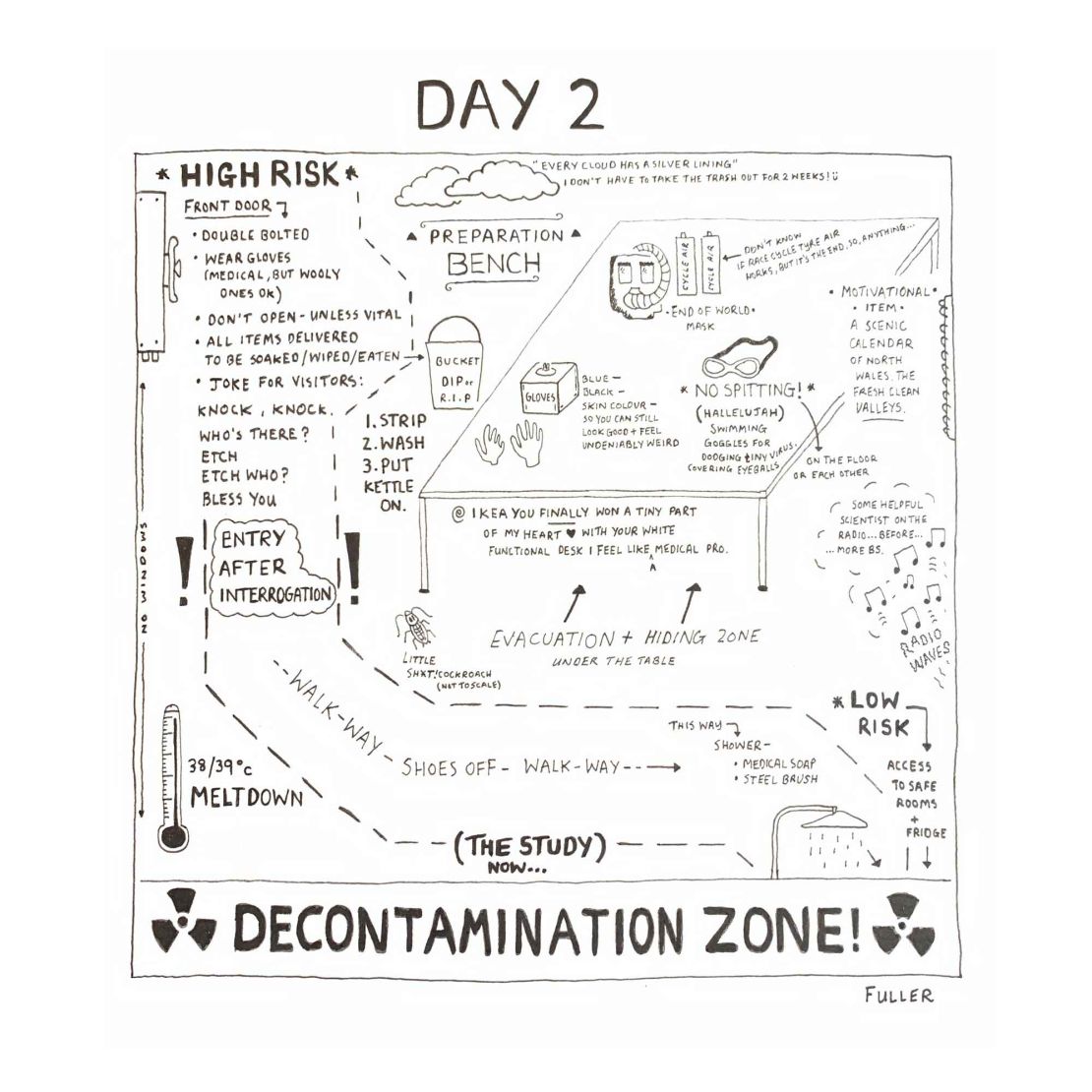
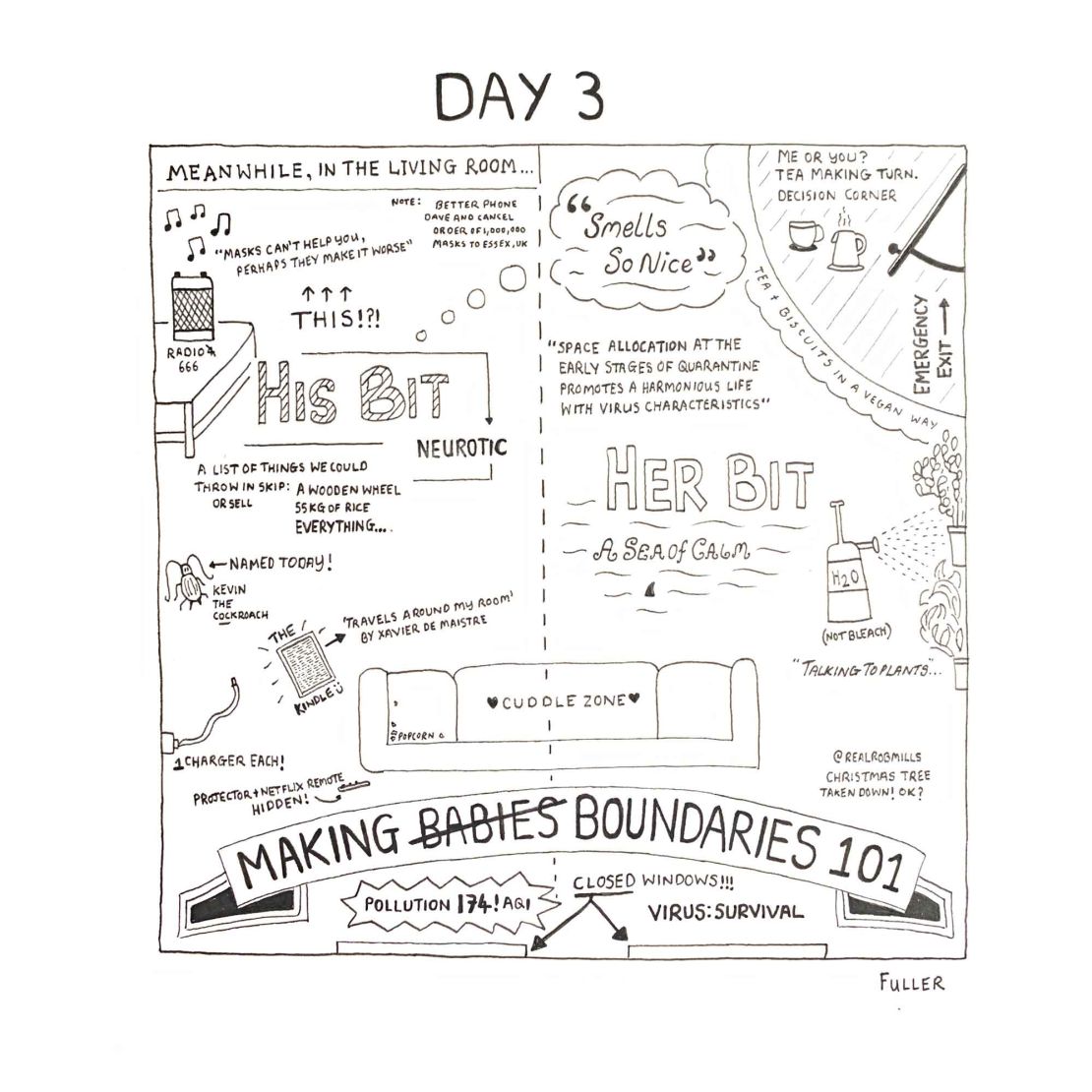
By day 9, Fuller finds himself thinking beyond the parameters of what he could see. The series becomes less about the artist’s personal triumphs and more about capturing the experiences of those who are just beginning to make sense of the crisis.
That was the same day the World Health Organization (WHO) announced that the Covid-19 outbreak was a global pandemic. “It was obvious that Beijing was moving on, but the global media was telling me a completely different story,” he said. “The feelings I was having during the quarantine became progressively more difficult to communicate – I couldn’t just think of my own experience.”
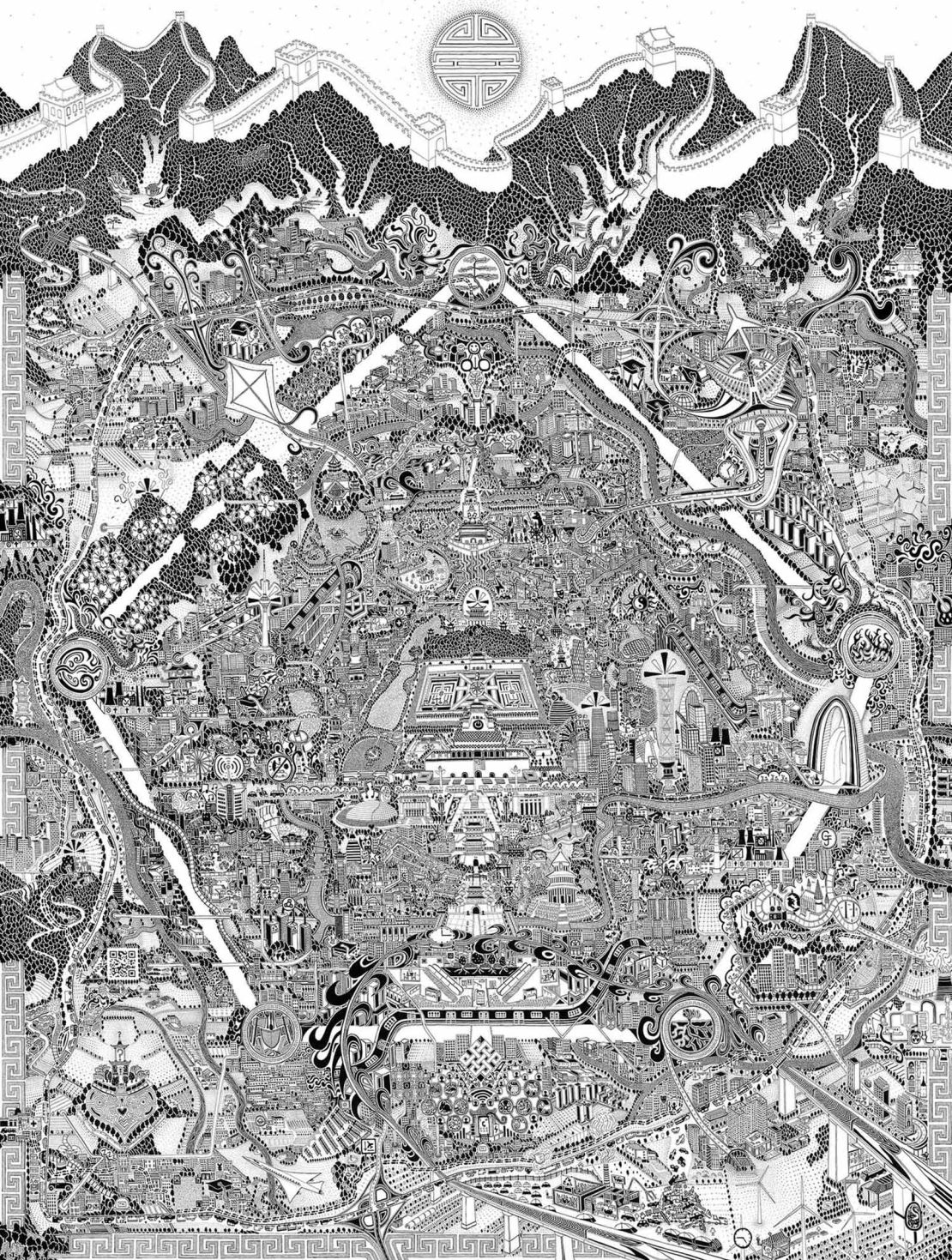
Looking out
He started reflecting on his own privilege as an expatriate in a major city and thought about how people back home in Britain and in smaller communities worldwide were coping with the crisis.
Some of his final pieces envision life in imaginary settings – a village with an “end of the world rave,” a deserted island surrounded by “a sea of sanitizer.” Other sketches grappled with the idea of fatalism – that the virus had now infected the celebrities we know and love and would eventually, in some way, reach the artist himself.
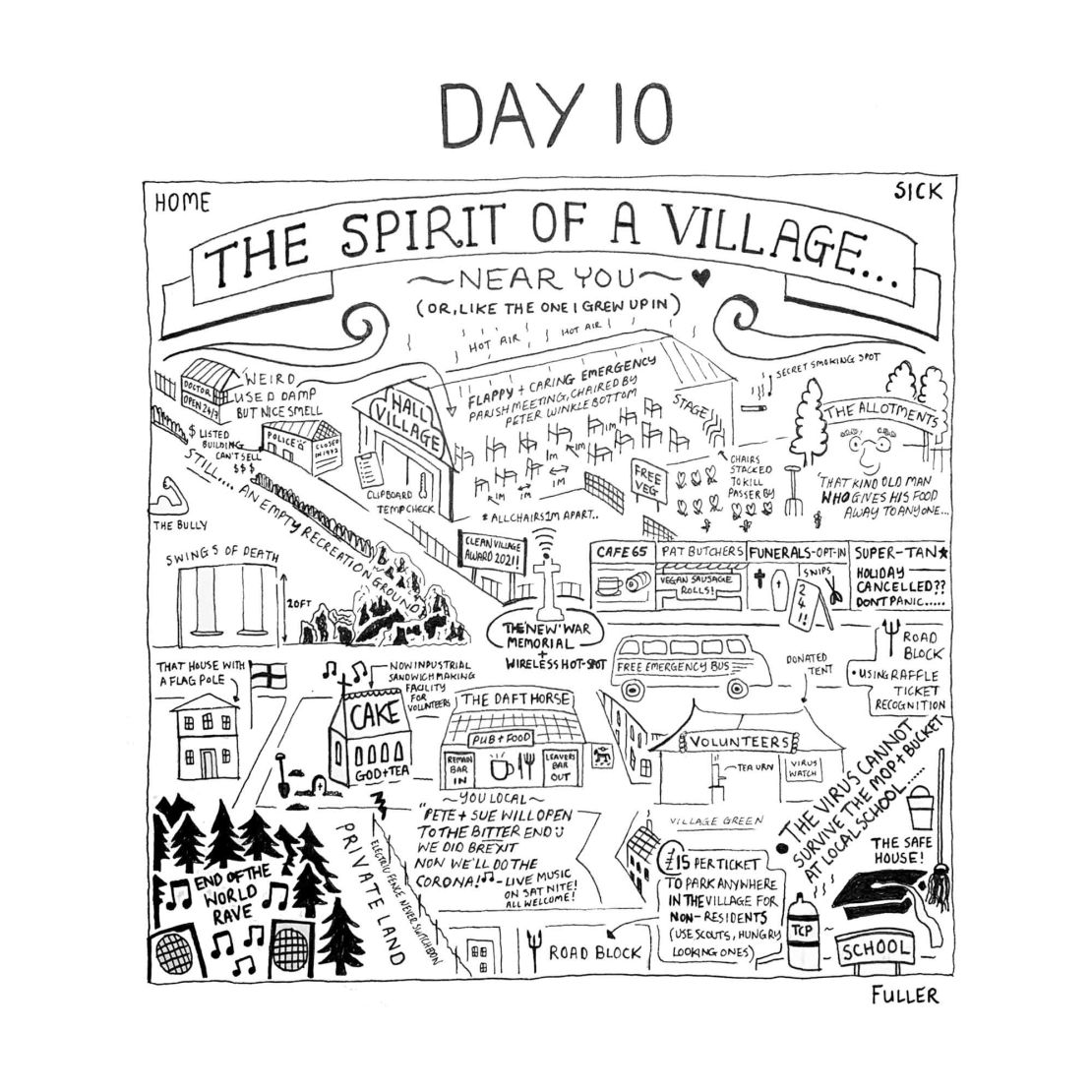
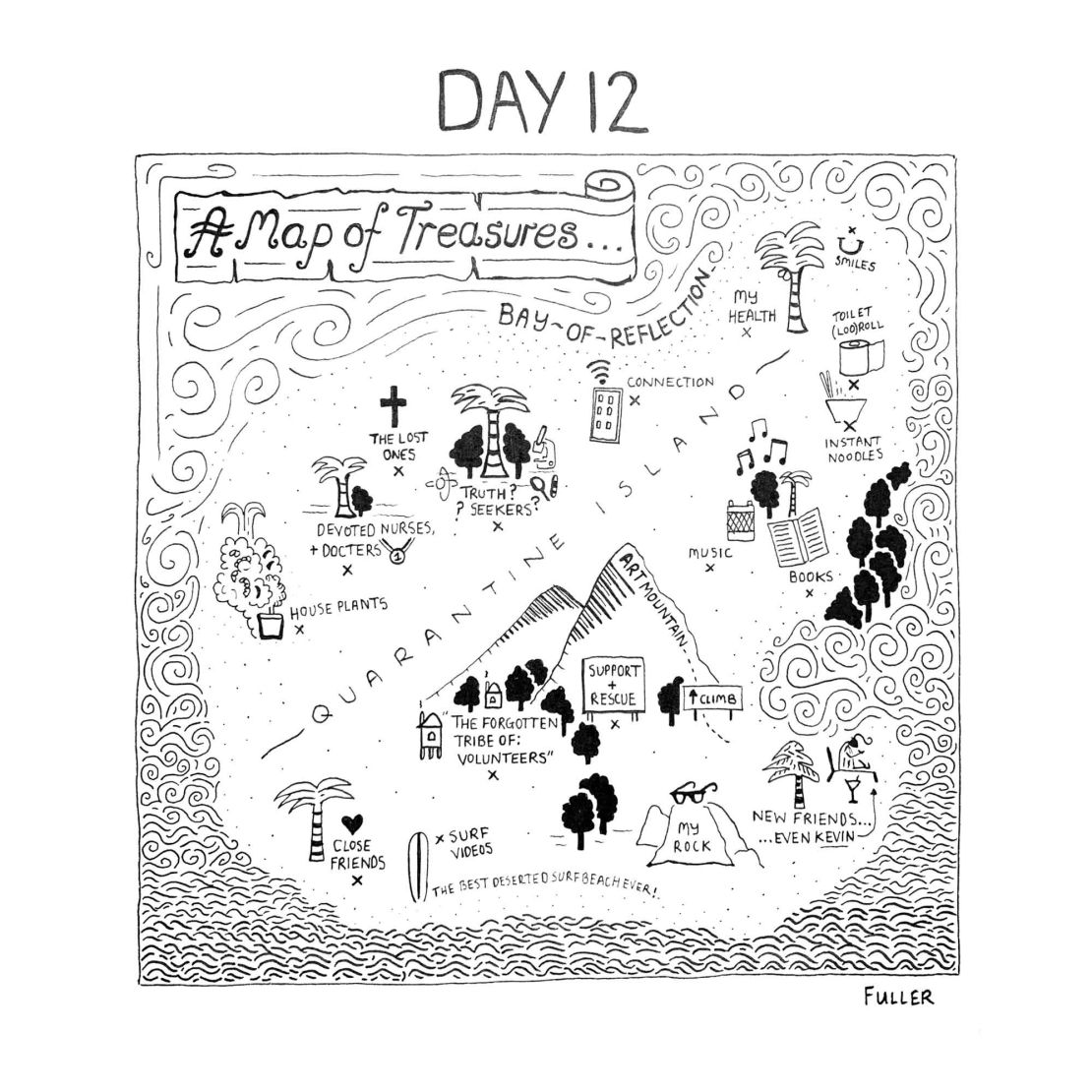
Humor has always been an integral part of Fuller’s work and he felt it was necessary to keep that in mind when documenting his experience. It became a way to counter all the information he was consuming from the news, which grew more concerning with each day.
“When you’re going through this experience, you go on this pursuit of understanding and seeking knowledge.”
“Day 1 was very much like: ‘Look at this ironic situation I’ve found myself in,’” he said. “Towards the end, I had absorbed all the information I possibly could about the virus.” He started to look outward and let his imagination run wild.
Fuller is now out of quarantine but, like many people around the world, his movements are limited by the need for social distancing.
He plans to use the time to extend his series with more maps about the pandemic that has caused so many people to stop, slow down and examine their own surroundings – in detail.
For more on Fuller, visit his website.
